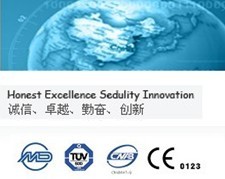| Radiology Room |
| Ultrasound Room |
| Surgery Room |
| Laboratory Room |
| Comprehensive Room |
| Pediatrics Room |
| Dental Room |
| Medical operation instruments |
| Hospital Furniture |
| Medical supplies |
News Center
Ingestible Capsule Monitors Intestinal Inflammation
Acute mesenteric ischemia—a life-threatening condition caused by blocked blood flow to the intestines—remains difficult to diagnose early because its symptoms often mimic common digestive problems. Current diagnostic tools, such as imaging scans, are invasive, expensive, and can delay treatment. Now, researchers have created a swallowable, light-emitting capsule that can detect intestinal blood flow loss noninvasively and within minutes.
The ingestible capsule, called FIREFLI (Finding Ischemia via Reflectance of Light), was developed by researchers from Mass General Brigham (Boston, MA, USA) and the Massachusetts Institute of Technology (Cambridge, MA, USA) who drew inspiration from the firefly’s bioluminescence, using light to reveal tissue oxygenation levels inside the intestines.
The battery-powered capsule generates light when activated by the small intestine’s pH level. As it travels through the digestive tract, it illuminates the surrounding tissue—healthy regions glow brightly, while ischemic (oxygen-deprived) tissue appears dimmer. These light patterns are captured and transmitted wirelessly to an external mobile device, allowing clinicians to assess intestinal health in real time.
In preclinical studies using nine pigs, FIREFLI achieved 90% diagnostic accuracy, with 98% sensitivity (correctly identifying ischemic cases) and 85% specificity (ruling out healthy cases). The results, published in Science Robotics, demonstrate strong potential for noninvasive, early detection of a condition that currently carries a 55% mortality rate.
By providing immediate, wireless readouts, FIREFLI could dramatically improve emergency triage, helping doctors quickly distinguish mesenteric ischemia from other causes of abdominal pain. It could also reduce reliance on costly imaging equipment, expanding diagnostic access in resource-limited hospitals and clinics.
“This work brings together engineering, biology, and medicine to make an invisible medical emergency detectable quickly and noninvasively,” said Dr. Giovanni Traverso, senior author of the study. “The approach could enable faster triage in emergency departments, reduce unnecessary invasive testing, expand diagnostic access, and lay the groundwork for future ‘smart’ capsules that combine sensing, wireless communication, and targeted therapy delivery.”
http://www.gzjiayumed.com/en/index.asp






